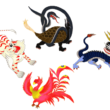Kukai: A Journey of Infinite Life
Posted date:2024-09-06Author:じゅうべい(Jubei) Transrator:ポンタ(Ponta)
Category:Buddhist Stories , Talk about Kyoto , The story of the idiot Rambo's deep good movie
広告
adsense4
“The earth is alive. The humans are also alive.”
Such lines still stay with me to this day. The film ‘Kukai’ was released in 1984, directed by Junya Sato and starring Kinya Kitaoji. This is an epic drama depicting the life of the famous Kobo-Daishi Kukai in a grand spectacle. Kukai dedicated his life to Buddhism in order to show all living beings the way to secure and stable life through Shingon Esoteric Buddhism (the secret teachings of Dainichi Nyorai). His epic way of life is depicted in the film.
All of us are alive in the vast compassion of Dainichi Nyorai.

Everything that happens in this world. All phenomena that occur in this world.
We who are living here now.
We are all equal in living as incarnations of the Dainichi Nyorai.
With the teachings of Shingon Esoteric Buddhism, which lives in such a magnificent and infinite world, Kobo-Daishi Kukai continued to use his power for the benefit of the world and others.

At times, he took pity on people suffering from illness or fire and save their hearts, and at other times, he performed life-denying prayers for the sake of those who suffer, communing with the mysterious power of Dainichi Nyorai and accomplished great deeds in union with all living beings in the world and the entire universe.
These are by no means acts of groundless blind mystification. It is an altruistic act of becoming one with the Dainichi Nyorai Buddha, the root of all existence, and saving all beings through his immense wisdom and compassion.
I think that this film seems to present one of the models for living proactively in society, based on the teachings of Shingon Esoteric Buddhism. What is Buddhism? What are religions? I thought this film was a good opportunity to learn about it and think about it.
adsense2
Incidentally, the religions are…
Also ‘Mune’ is the ultimate truth hidden within teachings. The character ‘Kyo’ means what is taught corresponding with ‘Mune’ (Gen Nakamura (ed.), Koji Fukunaga (ed.), Yoshiro Tamura (ed.), Tatu Konno (ed.), Fumimishi Sueki (ed.), Iwanami Buddhist Dictionary, 3rd edition, Religion, 2023, Iwanami Shoten).
If so, then Kukai could be said to have been a person who contributed to society and people by preaching the most important teaching (the ultimate truth) of Shingon Esoteric Buddhism (the secret teachings of Dainich Nyorai) in a variety of ways and according to the needs of others.
“This life was originally given to me by Dainichi Nyorai, the source of the universe.
From now on, it’ll return to Dainichi Nyorai.”

All of us are born from the vast Buddhist Ocean called Dainichi Nyorai, live with Dainichi Nyorai in the real world,
and when our life as a human being comes to an end, we return to the vast ocean of Dainichi Nyorai.
When I heard Kukai’s last lines in this film, this image suddenly came to me.
“Kukai did not seem to have any fear or anxiety about his own illness or death. For a yugya practitioner (a practitioner who has become one with Dainichi Nyorai), who has attained union with Dainichi Nyorai through the yugya method of contemplation (contemplation of becoming one with Dainichi Nyorai) and merged with life in the universe, it is natural that suffering in life and death is transcended there.”
“In Kukai’s view, death means merging with life force of the universe and returning to nature.”
This was pointed out by Yuikei Matunaga (1929-2023), a well-known leading scholar of esoteric Buddhism.
We live with Dainichi Nyorai in this world and walk the path with him. When the years pass and life comes to an end, we become one with the life of the Great Cosmic Buddha and return to Nature once more.
The life of Kobo-Daishi Kukai, and indeed also the lives of all of us, is indeed a journey of magnificent and infinite life.
It was the film Kukai that taught me this.
References
Yukei Matunaga, ‘Life and Death in the Kukai’ (Indo-Buddhist Studies, Vol.42, No.1. 1993)
Yahiko Komine, ‘Illustrations How to see the Mandala (1997, Dahorinkaku).
Miyasaka Yuhan, ‘Japanese Education Buddhism Saves’, (2003, Kadokawa Shoten).
Seiichi Kato ‘An Introduction to Kukai’ (2012, Kadokawa Gakugei Publishing).
Kukai and Seiichi Kato, ‘Kukai Sokushin Seibutu Yi’, Koeji Jisso Yi’, ‘Kouji Yi’, Beginners’ Japanese Thought (2013, Kadokawa Gakugei Publishing).
Uryu chu, ‘Easy to Understand Shingon Buddhism with Important Sutras (2016, Kadokawa Inc.)
Gen Nakamura (ed.), Koji Fukunaga (ed.), Yoshiro Tamura (ed.), Tatu Konno (ed.), Fumishi Sueki (ed.), ‘Iwanami Buddhist Dictionary, third edition (2023, Iwanami Shoten).
Author
じゅうべい(Jubei)
Hello everyone. I am Jubei, an earthling whose energy does not stop today. What I like is playing (manga, movies, music (J-Rock, etc.) and visiting cafes). Thank you for your understanding.












